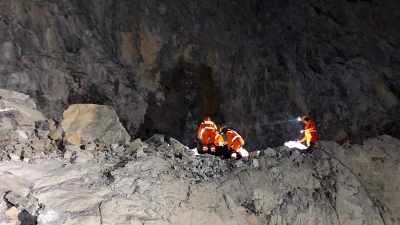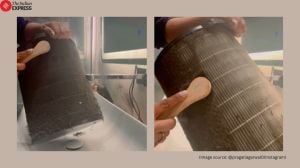Chandrayaan-1 enters operational lunar orbit
India's maiden unmanned lunar spacecraft Chandrayaan-1 reached its final orbital home, about 100 kms over the moon surface after ISRO scientists successfully carried out the last critical orbit lowering operation.

India’s maiden unmanned lunar spacecraft Chandrayaan-1 on Wednesday reached its final orbital home, about 100 kms over the moon surface after ISRO scientists successfully carried out the last critical orbit lowering operation.
The satellite will remain in the present operational orbit for about two years carrying a range of experiments.
The final 60-second manoeuver carried out from a ground station in Bangalore put the satellite into the intended orbit, exactly three weeks after it began its voyage to the outer space after it blasted off atop a polar rocket from Sriharikota spaceport.
“The journey part to the Moon is complete,” Project Director M Annadurai said signalling the successful completion of the mission to take Chandrayaan-1 to its intended orbit.
“We are eagerly awaiting the start of the experiments.”
ISRO said the next major event of Chandrayaan-1 is the release of Moon Impact Probe (MIP) from the spacecraft and its eventual hitting of the Moon’s surface. This is expected to happen on Friday and scientists hope to get the first signals in about 20 minutes after the MIP hits the lunar surface.
The entry of Chandrayaan-I into the final lunar orbit followed a series of three orbit reduction manoeuvers conducted during the past three days by repeatedly firing the spacecraft’s 440 Newton liquid engine, the Bangalore-headquarted space agency said in a statement.
As part of these manoeuvres, the engine was fired for a cumulative duration of about 16 minutes.
With this, ISRO said, the carefully planned complex sequence of operations to carry Chandrayaan-1 from its initial Earth orbit to its intended operational lunar orbit with the use of its liquid engine has been successfully completed.
“As a result of the manoeuvres, the farthest point of Chandrayaan-1 orbit (aposelene) from the moon’s surface was first reduced from 7,502 km to 255 km and finally to 100 km while the nearest point (periselene) was reduced from 200 km to 182 km and finally to 100 km”, ISRO said.
During these operations, Chandrayaan-1’s liquid engine built by Liquid Propulsion Systems Centre, Thiruvananthapuram, has been fired a total of ten times successfully.
In its present operational orbit, the Chandrayaan-1 spacecraft takes about two hours to go round the moon once.
From this operational circular orbit of about 100 km height passing over the polar regions of the moon, it is intended to conduct chemical, minerological and photo geological mapping of the moon with Chandrayaan-1’s 11 scientific instruments (payloads).
Two of those 11 payloads — Terrain Mapping Camera (TMC) and Radiation Dose Monitor (RADOM) – have already been switched on. TMC has successfully taken the pictures of the Earth and the Moon.
After its successful launch by PSLV-C11 on October 22 into an initial Earth orbit, the Chandrayaan-1 spacecraft proceeded towards the Moon and successfully entered into an elliptical orbit around that celestial body on November 8.
Since its launch, the spacecraft’s health and orbit have been continuously monitored from the Spacecraft Control Centre of ISRO Telemetry, Tracking and Command Network with critical support from antennas of Indian Deep Space Network (IDSN) at Byalalu on the outskirts of Bangalore.






- 01
- 02
- 03
- 04
- 05

























